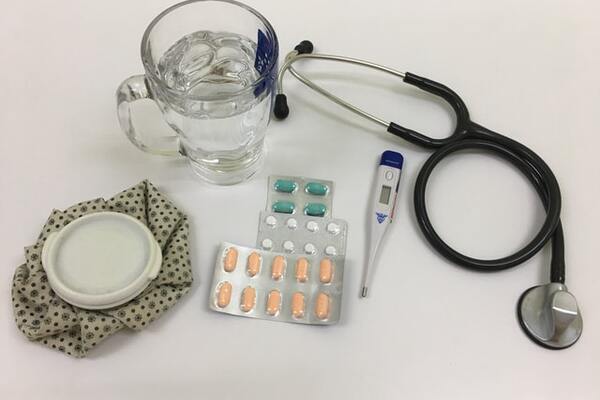Everyone is excited! But what if the kids, or you, get seasick on your vacation. Suddenly, you realize that you don’t know how you and your family will react to being on a ship at sea. With good reason, you wonder how to tell if you, or your kids, will get seasick on your cruise?
Seasickness, or more appropriately motion sickness, affects each person differently. If you, or anyone in your family, suffer from motion sickness while riding in a car, on a bus, train, airplane, or even on amusement park rides, you may suffer from seasickness on a cruise.
Almost everyone takes a while to “get their sea legs.” Even large cruise ships have a certain motion that can induce seasickness. The symptoms can range from almost unnoticeable to debilitating. We’ll help you understand why you get seasick and give you some insight into preventing the worst of the symptoms.
Why Do We Get Motion Sick?
Seasickness is not an illness at all. You get that awful feeling when you see conflicts with what your inner ear is sensing. Sitting in a moving car is a perfect example.
- Your inner ear cannot detect any motion while you sit still in the car
- Your eyes see the world whizzing by at high speed outside the car.
- Your brain has trouble reconciling these different messages and gets confused
- The confusion causes dizziness and nausea, the classic symptoms of motion sickness.
Everyone experiences motion sickness to a certain degree at some time or another. It is a natural reaction to unnatural situations. As we get older and our brain has more experience, we become somewhat less susceptible to motion sickness. Unfortunately, younger children don’t have this built-in coping mechanism.
How Common is it to Get Sick on a Cruise?
15% of people have reported feeling seasick while onboard. In our experience we can add an other 10% of passengers that will suffer from other illness, such as colds, flu and hangovers.


In the comments a lot of passengers that replied no, have mentioned been sick, in majority due to hangovers!
Some passenger mentioned they get "land-sick" when disembarking, it happens to me as well. I continue with my tablets a couple of days after disembarking, it helps a lot.
Take a Day Trip to see who Might get Seasick on your Cruise
A little prevention can go a long way if you are planning a cruise with your family. Since car sickness is closely related to seasickness, taking a couple of car trips with your kids can give you an idea of how well they will tolerate being on a cruise ship.
Day trips in the car are great experiences. If possible, choose a route with turns, hills, and dips. Watch your children (and yourself) carefully for the first signs of carsickness. Watch for the usual early symptoms.
- Dizziness
- Excessive saliva production
- Headache
- Nausea
- Burping
- Sweating
If anyone develops these symptoms, stop the car, and let everyone get out and walk around. Remember that the cause of motion sickness is the conflicts in the brain. Remove those conflicts and the symptoms usually disappear quickly.
 Winter Morning in Drøbaksundet, Norway
Winter Morning in Drøbaksundet, Norway
What Can You Expect on a Cruise Ship?
Cruise line companies have a vested interest in making things as comfortable as possible for you and your family. The cruise line companies want you to come back often. A bad experience with seasickness puts many people off the idea of another cruise.
Cruise ships designers understand this concept. Your cruise ship has features to reduce you or anyone in your family from suffering a bad case of seasickness, such as:
- The sheer size of the ship – Cruise ships are huge. The size of these monsters reduces the movement of the ship as it goes through the water. You may not know the ship is moving in many cases if you cannot see the water or the horizon.
- Stabilization systems – Newer cruise ships have built-in stabilization systems that reduce or eliminate side-to-side rolling motion in any conditions except the most severe.
- Distractions and entertainment – Keeping your brain occupied with distractions and entertainment is a great way to reduce seasickness chances. Keeping you busy and entertained is the business of cruise lines.
Before you Raise Anchor Make a Few Preparations
Before you embark on your much-anticipated family cruise, here are a few tips to make sure everyone has a memorable trip for the right reasons.
- Talk to your doctor - If you or someone in your family is subject to motion sickness, talk to your doctor about medications that can help prevent or lessen the symptoms. There are many over the counter medications for treating nausea. In severe cases, your doctor can give you a prescription for a more potent form of these medications.
- Book the Right Cabin – Interior cabins lower in the ship have less movement than those on the upper decks. The less movement your body senses, the less conflict in the brain. Don’t worry too much about your cabin location. You will probably be so busy with activities that you will spend minimal time there anyway.
- Start your cruise well-rested – Be sure everyone gets a good night's rest the night before you board the ship. Getting kids to sleep in such circumstances can be challenging. The excitement and anticipation are hard to overcome. However, a well-rested body is less prone to motion sickness.
- Keep your stomach busy – A light meal before getting on the ship can help you combat nausea you may feel. Snacking every few hours is also a good idea. The snacks should be light on your stomach. You should avoid spicy, acidic, or snacks heavy with fat.

Hurray, Hurray, we are Underway!
The big day has arrived, and you have your family on board for your ocean cruise. As the cruise ship leaves the dock and heads out to sea, keep a few things in mind if someone in your family begins to feel the first effects of seasickness.
- Stay Hydrated – Try to keep everyone hydrated by drinking lots of water. Don’t ingest huge quantities all at once. Small sips taken often will help keep your stomach settled and avoid complicating the effects of any seasickness with dehydration.
- Eating is good in moderation – Don’t let everyone in the family immediately head to the massive buffet line and embark on a feast. Heavy and rich foods can make the symptoms of seasickness worse. Light meals, eaten often, are a better alternative. Later in the cruise, you can feast.
- Alcohol is not a good solution – For the adults in the family, alcohol is not a good way to treat any of your seasickness symptoms. You may only make things worse as the alcohol further confuses your brain.
- Take a Nap – Sleeping through your cruise is not an ideal solution, but a quick short nap can help alleviate seasickness symptoms. If you have trouble sleeping, try one of the over the counter sleep aids. The doctor or pharmacist on the cruise ship can give you a recommendation on the best choice.
Learning to Cope with Seasickness
If you or your family continue to feel seasick, there are some tricks and tips that accomplished travelers on cruise ships rely on to help. Don’t discount these ideas until you try them.
- Watch the Horizon – When you are on the deck enjoying the views and the ocean breeze, focus on the horizon. The horizon seems to be motionless to your eye, which puts it into agreement with your inner ear. This trick often reduces or eliminates those feelings of seasickness.
- Move around – Walking puts your body in motion. As you walk, your eye senses the motion, and again, your brain is happy because it is getting similar signals. Walking around is particularly effective if you walk through the cruise ship's interior and not on deck.
- Get Low for Comfort – No, you don’t have to lay down all the time. However, the lower portions of the cruise ship tend to experience less movement and rolling. If you are experiencing seasickness symptoms, find some activities in the lower portions of the cruise ship.
- Try Some Ginger Tea or Snacks – Ginger is a well-known natural remedy for nausea. Drinking ginger tea or eating small snacks with ginger can help settle your stomach.
- Medications – If you experience seasickness symptoms on your cruise, schedule an appointment with the ship’s doctor. You want to have the best possible experience on your cruise. Sometimes medication is the best answer.
Don’t Let the Fear of Seasickness Spoil Your Cruise
If you suspect that you or someone in your family tends to motion sickness, don’t let that spoil your cruise plans. With a little planning and knowledge, you can ensure a memorable and pleasurable time on your cruise. We hope that the tips and tricks in this article help you plan, prepare, and enjoy your cruise ship experience.
Originally published Feb 24, 2021, updated February 25 2021










